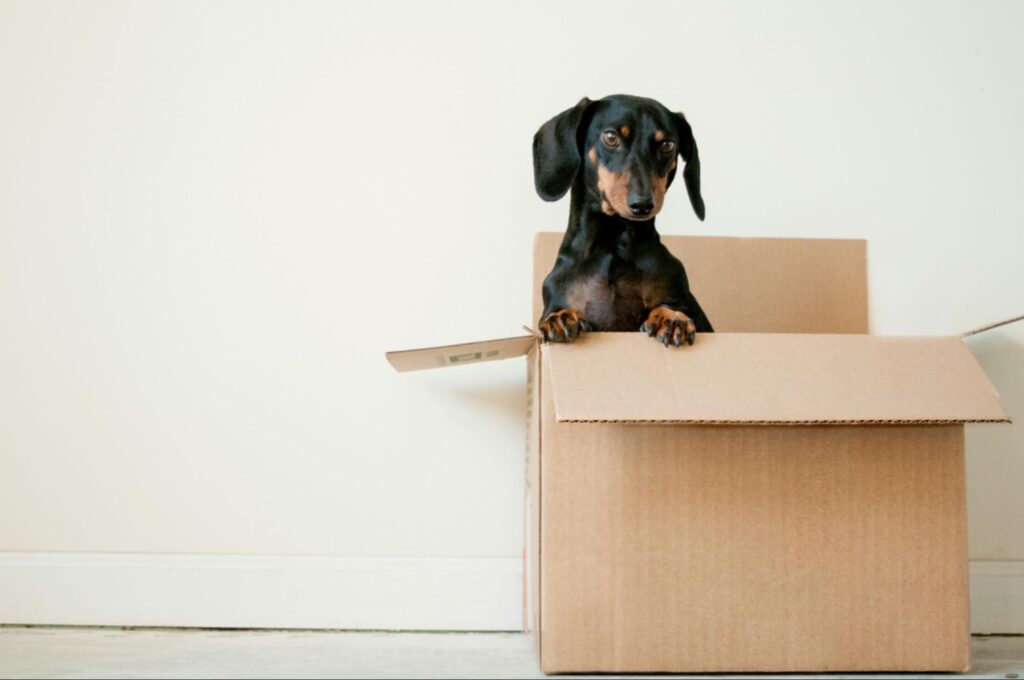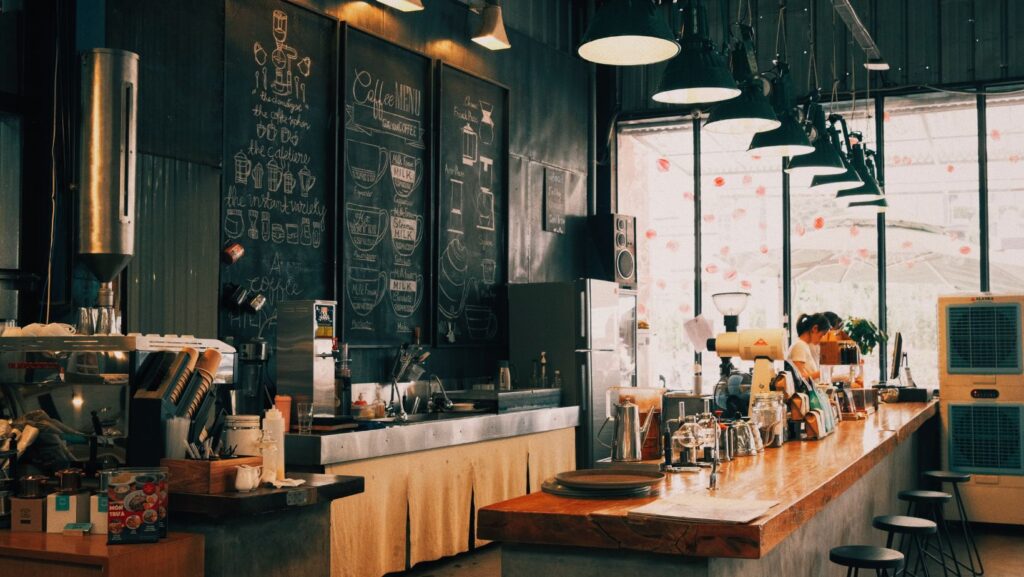Moving can be a daunting task, often filled with chaos and confusion. Creating a structured moving checklist is essential for staying organized and reducing stress during this process. With the right planning, individuals can navigate each step smoothly, ensuring nothing gets overlooked.
Relocating to or from a château comes with its own set of challenges, especially when it comes to moving precious or large items. Renting professional-grade crates can be a game-changer. Teacrate’s rental removal crates provide the durability and protection needed to safely transport your belongings. Whether it’s priceless antiques or bulkier furniture, these crates ensure that everything arrives in perfect condition, making the entire moving experience much more manageable.
In this blog post, readers will discover practical tips and essential items to include in their moving checklist. By the end, they will be equipped with the tools needed to tackle their move with confidence.
Planning Your Move
Effective planning is essential for a smooth moving experience. Key aspects include creating a timeline, budgeting, selecting a moving company, inventorying belongings, decluttering, gathering supplies, and notifying important parties.
Creating a Timeline
Establishing a timeline is crucial for organizing the moving process. A well-structured schedule helps manage tasks and reduces last-minute chaos. Start by setting a moving date and work backward.
Identify key activities such as:
- Hiring movers or booking a rental truck
- Packing belongings
- Notifying utility companies
Create a checklist with deadlines for each task. Regularly review and adjust the timeline as needed, ensuring that everything stays on track.
Budgeting for Moving Expenses
Budgeting for moving expenses allows for better financial control. Begin by estimating costs associated with moving. Key expenses may include:
- Moving company fees
- Packing supplies
- Travel costs
It is wise to add a buffer for unexpected expenses. Outline all costs in a spreadsheet to monitor spending. Tracking these expenses will help avoid financial surprises during the move.
Selecting a Moving Company
Choosing the right moving company can significantly impact the moving experience. Begin by researching reputable options in the local area. Check online reviews, seek recommendations, and evaluate qualifications.
Request written estimates from multiple companies. When comparing quotes, look for:
- Services offered
- Insurance options
- Experience and reliability
Do not underestimate the importance of choosing a fully licensed and insured moving company. This will provide peace of mind throughout the process.
Inventory and Decluttering
Conducting a thorough inventory and decluttering process simplifies packing and reduces moving costs. Start by listing items room by room. This inventory aids in identifying belongings that are essential versus those that can be discarded or donated.
Consider using a system like:
- Keep
- Donate
- Sell
- Trash
This approach helps minimize what needs to be transported. Decluttering enhances organization and creates a more streamlined move.
Gathering Moving Supplies
Having the right moving supplies on hand will facilitate packing and ensure that items remain protected. Key supplies include:
- Boxes in various sizes
- Bubble wrap and packing peanuts
- Tape and markers for labeling
Visit local stores or websites for purchasing supplies. Consider repurposing materials such as blankets or towels for added cushioning. A well-stocked supply station streamlines the packing process.
Notifying Important Parties
Notifying important parties ahead of the move prevents disruptions in services and responsibilities. Begin with utilities such as electricity, gas, and internet providers. Inform them of the moving date to ensure seamless service transitions.
Other notifications should include:
- Post office for mail forwarding
- Banks and financial institutions
- Insurance providers
A thorough notification process ensures that critical services remain uninterrupted and that all necessary updates are processed in a timely manner.
Packing Strategies
Effective packing strategies can significantly reduce the stress of moving. Organizing items methodically ensures a smoother transition and minimizes the chances of losing or damaging possessions.
Systematic Labeling
Creating a labeling system is crucial for an organized move. Use clear, bold markers to label boxes on multiple sides for easy identification. Color-coding can enhance this process; assign different colors for each room to streamline unpacking.
Include essential information on each label. This might involve noting the room, contents, and whether the box is fragile. A consistent labeling method helps maintain organization and saves time when searching for specific items in the new space.
Packing Room by Room
Packing room by room is a logical and efficient strategy. Start with the least-used spaces, such as storage areas, to avoid disrupting daily activities. This approach minimizes chaos and prioritizes what needs to be packed first.
In each room, group similar items together. For example, pack books with other literary items and kitchen tools with small appliances. This strategy simplifies the unpacking process, allowing for a smooth transition into the new home.
Essentials Box
An essentials box is vital for immediate needs upon arrival. It should contain items that provide comfort and utility for the first few days. Examples include toiletries, medications, clothing, and basic kitchen supplies.
Pack this box last to ensure easy access. Clearly label it as “Essentials” and consider using a distinct color for visibility. Having such a box readily available helps to alleviate the stress of searching through packed boxes upon moving in.
Fragile Items
Handling fragile items requires extra care. Use sturdy boxes and ample packing materials such as bubble wrap, packing paper, or foam. Wrap each fragile item individually to prevent movement during transport.

Label boxes containing fragile items distinctly as “Fragile” with handling instructions. Consider packing these items separately from others for additional protection. This strategy helps to ensure that fragile items arrive at the new location intact.
Heavy Items
Heavy items should be packed thoughtfully to avoid injury and damage. Use smaller boxes when packing heavy items, as larger boxes can become cumbersome. Ensure that the weight is evenly distributed within the box for balance.
For particularly heavy items, use proper lifting techniques. Bend at the knees and keep the back straight to prevent strain. Label boxes with heavy contents accordingly, so movers handle them with care, reducing the risk of accidents.
A Week Before the Move
As the moving date approaches, there are several critical tasks to complete. Confirming arrangements, addressing appliances, managing last-minute packing, and planning for children and pets are essential for a smooth transition.
Confirm Arrangements
A week prior to the move, it is crucial to confirm all arrangements with the moving company. This includes verifying the date, time, and details about the moving truck’s size, as well as the number of movers. If there are any special requirements, such as the need for a packing service or items that require special handling, this is the time to inform the movers.
Next, check that any necessary permits for moving trucks are obtained, especially for urban areas. If the move involves elevators or specific loading zones, it’s important to secure those arrangements as well. Communication about these logistics ensures a seamless moving day.
Prepare Appliances
Preparing appliances for the move should also take place a week before the actual day. For refrigerators and freezers, empty the contents and begin defrosting. This process can take several hours, so starting early is advisable. It’s essential to clean and dry these appliances to prevent mold growth or bad odors during transit.
Additionally, disconnect washing machines and dryers from their water and power sources. Secure loose parts with tape or in bags to prevent damage during transport. Remember to keep all appliance manuals and warranties accessible, as they may be needed for the new location.
Pack Last-Minute Items
Last-minute packing often includes items that are used daily. It’s helpful to create a list of essential items that will be packed last. This could include kitchen utensils, toiletries, and important documents. Designate a specific box for these items, clearly labeling it as “Last Minute.”
Consider using suitcases for clothing and personal items, as they are easy to transport. Packing these items carefully helps avoid confusion and ensures that the essentials are easily accessible upon arrival at the new home.
Plan for Children and Pets
Planning for children and pets can alleviate stress during the moving process. If possible, arrange for them to stay with friends or family on moving day. This keeps them safe and allows the movers to work without interruptions.
For pets, prepare a separate area with familiar items such as toys and bedding. This space can serve as a retreat amidst the chaos. It’s also beneficial to schedule a visit to the veterinarian for any necessary vaccinations or documentation needed for a new location, especially if relocating to a different state.
Moving Day
Moving day involves various essential tasks that ensure a smooth transition. Key activities include a final check of the old home, supervising the movers, protecting valuables during transport, and preparing a first night box for convenience.
Final Walk-Through
Before leaving the old home, a final walk-through is crucial. This ensures that all items have been packed and nothing is left behind. Check each room, closet, and storage space thoroughly.
Create a checklist to help with this process:
- Kitchen: Look in all cabinets and appliances.
- Bedrooms: Check under beds and in dressers.
- Bathrooms: Ensure all toiletries are packed.
- Garage/Attic/Basement: Inspect often-forgotten spaces.
Take note of any issues, such as damage or missing items. Document these with photos for records. Confirm that utilities are turned off or transferred to the new address.
Supervising Movers
Supervising the movers is essential for maintaining organization. Upon arrival, greet the moving team and provide instructions on what to load first. It’s helpful to label boxes and furniture to avoid confusion.
Communicate clearly about fragile items and special instructions. Designate an area for smaller, valuable items to keep them secure during the move. Stay accessible to answer questions and direct the flow of the loading process.
Keep a list of items that are loaded onto the truck. A detailed inventory can help in checking off items at the new location.
Transporting Valuables
Safeguarding valuable items during transportation is a priority. Create a separate container for valuables such as jewelry, important documents, and electronics.
Consider the following tips:
- Use a lockbox: Secure important documents and items.
- Carry small items: Keep these in a personal vehicle when possible.
- Label boxes: Clearly mark boxes containing fragile or valuable items.
If hiring professional movers, inform them about these items so they can take extra precautions. Adequate packing materials, such as bubble wrap and blankets, are essential for protecting these belongings during transport.
First Night Box
A first night box simplifies the transition to the new home. Pack essential items that will be needed immediately upon arrival. Include items like toiletries, a change of clothes, basic kitchen supplies, and any necessary medications.

Suggested items for the first night box:
- Toiletries: Toothbrushes, soap, and towels.
- Bedding: Pillows, sheets, and blankets.
- Snacks and water: To keep everyone fueled and hydrated.
Clearly label the box for easy identification. Having these essentials readily available will ease the stress of moving in and help settle in before unpacking everything else.
Setting Up Your New Home
Establishing a functional and comfortable environment in a new home requires careful attention to detail. Organizing key tasks like cleaning, unpacking essentials, and security can make the transition smoother.
Initial Cleaning
Before unpacking belongings, a thorough cleaning of the new home is essential. Starting from the top, dust ceiling fans, light fixtures, and shelves.
- Focus on high-traffic areas: Pay special attention to kitchens and bathrooms. Use a disinfectant for surfaces that require sanitation.
- Floors need attention: Vacuum carpets and mop hard surfaces to eliminate any lingering dust or dirt.
Consider deep cleaning carpets or stovetops for a fresh start. Cleaning the space first allows for a more enjoyable unpacking experience.
Unpacking Essentials
Identifying essential items for immediate access ensures comfort during the first days. Start by unpacking:
- Kitchen necessities: Dishes, utensils, and small appliances should be prioritized for meal preparation.
- Bedding and personal items: Ensure that bedding is available for a good night’s sleep.
Pack a separate, labeled box for these essentials and keep it accessible. This approach minimizes chaos and helps maintain a sense of normalcy amidst the move.
Installing Security
Ensuring the safety of a new home is critical. Activate security systems immediately. Here are key steps:
- Change the locks: This adds security against previous owners or tenants.
- Set up alarms and cameras: Position security devices at entry points to deter unwanted visitors.
Take time to familiarize oneself with how these systems work. Establishing security measures promptly can provide peace of mind.
Unpacking at Your Pace
Unpacking can be overwhelming, so take it step by step. Begin with rooms most used, such as the bedroom and kitchen. Create a plan that allows for gradual unpacking.
- Set aside time: Dedicate specific days to unpack different areas.
- Avoid rushing: This helps in settling in without stress.
By pacing the unpacking process, individuals can ensure that the home evolves into a comfortable living space without feeling burdened.
Organizing Your Space
Effective organization transforms a new house into a functional home. Start with furniture placement that optimizes flow and accessibility.
- Create zones for activities: Designate areas for sleeping, cooking, working, and relaxing.
- Utilize storage solutions: Invest in organizers, baskets, and shelves to minimize clutter.
Label storage boxes to simplify locating items later. Consistent organization contributes to an inviting and practical environment.
Post-Move Tasks
After relocating, several essential tasks require attention to ensure a smooth transition into a new home. Address updates, utility configurations, and community engagement are significant to fully establish oneself in the new environment.
Address Change Updates
Updating the address is a crucial step following a move. Individuals should begin by notifying the United States Postal Service (USPS) to forward mail.
Next, it’s important to inform banks, credit card companies, and any subscription services.
An effective approach to manage this is to create a checklist that includes all relevant contacts:
- Banks and credit unions
- Utilities
- Insurance providers
- Employers
Moreover, registration for voting and updating vehicle registration may also be required.
Utility Setup
Setting up utilities is vital for comfort and convenience in the new home. Arrangements for electricity, water, gas, and internet services should be prioritized.
Before moving in, contacting utility providers to transfer service can save time.
Each utility service has specific procedures, so it’s helpful to jot down the following details:
- Account numbers
- Service addresses
- Contact information
Some providers offer online setups, which streamline the process. Individuals should schedule installations ahead of moving day.
Service Providers
After securing utilities, individuals must identify and set up services that enhance everyday living. These may include trash collection, lawn care, or pest control.
It’s wise to research local companies and read reviews to make informed choices. Additionally, gaining insights from neighbors can be beneficial.
Creating a list of essential services ensures nothing is overlooked:
- Cleaning services
- Internet and cable providers
- Maintenance contractors
Timely arrangements for these services will contribute to a smoother adjustment period.
Community Integration
Integrating into a new community can enhance the moving experience. Finding local resources such as grocery stores, healthcare facilities, and parks helps settle in.
Joining community groups or social platforms can foster connections. Engaging with neighbors at local events provides opportunities to socialize.
Consider listing activities to explore:
- Library programs
- Sports leagues
- Volunteer opportunities
Becoming acquainted with community rules and regulations is also crucial.
Finalizing Documentation
Finalizing necessary documentation completes the transition. Important documents such as lease agreements, mortgage paperwork, and insurance policies need careful review for accuracy.
Individuals should keep copies of the following in a dedicated file:
- Moving contracts
- Service agreements
- Identification documents
Staying organized assists in ensuring that all relevant documents are secured and easily accessible.



